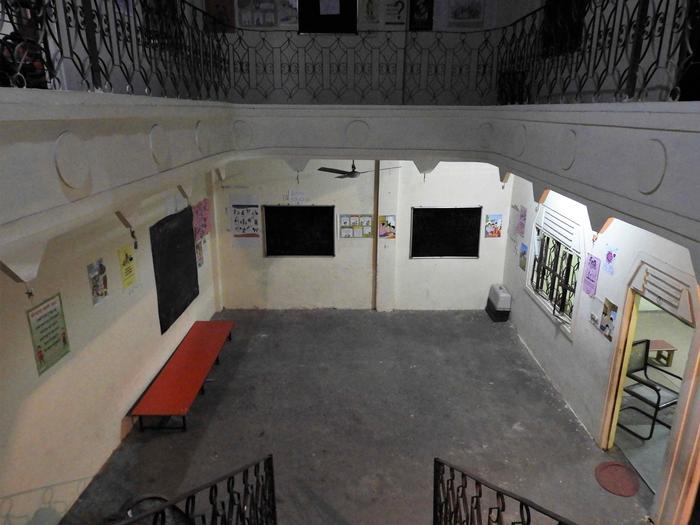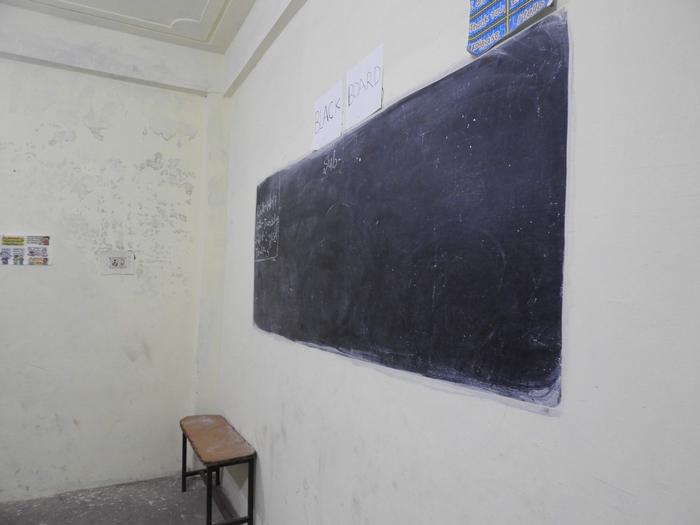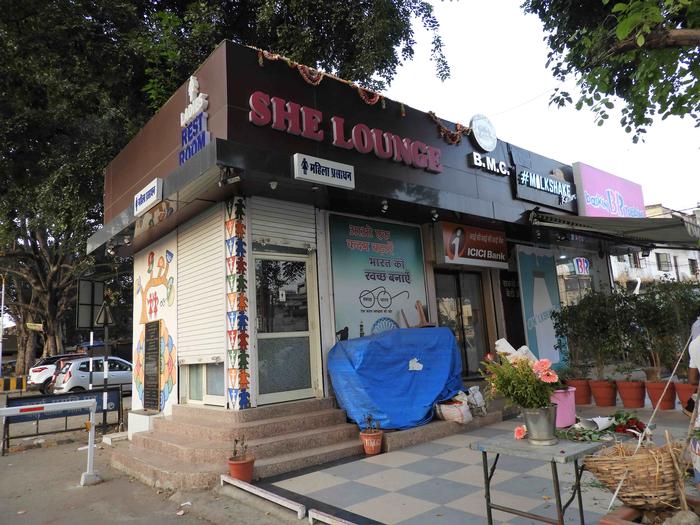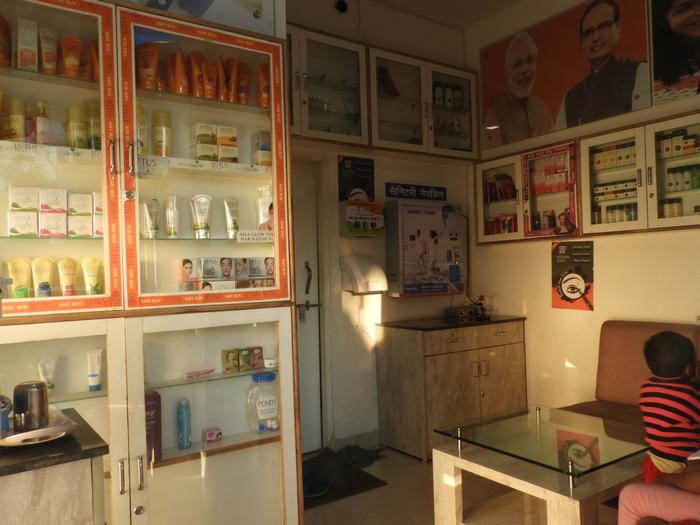[ID:2585] Transforming Society Through SpacesIndia In third world nations like India, can societal issues like sanitation, health and education, which form the crux of citizen welfare be solved through space design and development?
No art from is that related to the society as is architecture, it is physically rooted in the geographic location of that society and in the lives of its users. Architecture not only expresses the society and its aspirations, economy and technical advancements but also helps shape the vision of the society. It is both a mirror and a tool to shape a society's identity.
We always relate architecture and a society’s identity with tall skyscrapers and monumental work but often forget the humble structures that empower a society. Some of these structures have the power of shaping the society and working towards solving issues like safety, security, education and sanitation prevalent in developing nations. Architecture at its root must function as an instrument to solve social issues.
Our sites, the Pathfinder school and the She Lounge are a reflection of basic necessities that are absent in most third world nations and aims at solving them through minimalistic space design. The former, situated in old Bhopal looks into the upliftment of women and children and making them independent enough to stand on their own feet, while the latter, in newly developed urban Bhopal caters to female hygiene and sanitation.
India as a nation has long since been a male dominated society, where women are seen as inferior to men. Daughters are aborted, abandoned, buried alive and poisoned on a daily basis. Female infanticide is still prevalent in the 21st century. Women are seen as a liability – the weaker section. These two structures are a new paradigm in changing the condition of Indian society. They offer hope to women as they deal with women and children’s safety, sanitation and education which are most often turned a blind eye upon.
Separated by the lake, the capital city of Bhopal offers starkly contrasting cityscapes. The old, Muslim dominated area, with its fascinating mosques, overcrowded bazaars and narrow bylanes offers a glimpse into the traditional city that the Begums raised whereas the new, developing city, nestled along the Arera and Shymla hills is a plethora of great architecture, wide roads and urbanised populace.
Going through the old city of Bhopal, across the railway lines, lies the settlement of Aishbagh. Crossing the railway tracks with dozens of Aishbagh migrants, rickshaw pullers and daily wage workers we came across the only prominent landmark in this area, the Aishbagh Stadium, a field hockey stadium, home ground for World Series Hockey team, Bhopal Badshahs. Taking help from locals and using google maps as our guides we meandered through the many gullies in hope of reaching our destination. The context represented a typical urban blight setting with random shops, welders and carpenters greeting us throughout our way and old uncles discussing their daily lives and the world over cups of chai along the footpaths and men working their way out through the many odd jobs to make ends meet. Moreover, walking along the confined lanes, we realised that the area was predominantly a male oriented society with no women or children in view and this consciousness instilled a sense of fear and rush to reach the site as early as possible. The crammed and scanty streets abruptly opened up into a broad lane which led to a two-storey building. The structure looked very simple from the outside and the only thing conveying that it was the Pathfinder School was the flex-banner bearing its name. The environment of Aishbagh suddenly started to feel more comfortable and accommodating due to the presence of kids and women.
As a community of migrant poor, many kids are forced to drop out and work in the fields. They are expected to earn and feed the family. Also, many in such societies have a large population of non-employed, monetarily frustrated and depressed people, who due to petty issues end up committing crimes like sexual assault or indulging in substance abuse. The Eka Foundation is targeting at improving the life of such kids and women who on few days are scared to go back home because a certain uncle seemed angry or frustrated in the morning. The volunteers of Eka Foundation working in the fields through their outreach programme help in identifying the distressed kids or the ones in need of education and help them walk the right path.
An English medium school, Pathfinder is affiliated to the MP Board and has trained diploma teachers coming from various parts of Bhopal. The formal school charges the kids with bare minimal fees of Rs 100 per month. Considering the meagre income of the residents, the school did not charge any fees initially which led to the parents and kids being casual about schooling and thus the introduction of fees.
The bell at 1 pm marks the end of an official school day after which the building functions as a vocational centre and an informal school with Computer, English and sewing classes which help the working women and kids with basic reading and writing skills, calculations and accounting. Along with these teachings, the structure acts as a shelter for interaction between councillors or psychologists and sexual or substance abuse victims. Informal education and counselling sessions are not charged for by the school.
The school structure is an epitome of optimum utilisation of space. The structure in itself is not very grand or thoughtfully built, but the judicious use of spaces by the users, has played a major role in making the place their own. Their use has aided a small school in functioning as a multiple use building.
Bablu, a seven year old was given charge of guiding us through his school, a place he preferred calling home. Being a big Bollywood buff, He said, “The grand staircase reminds me of Hindi movies where the protagonist descends the steps and manages to grab attention of everyone around him and similarly, I feel like a superstar on that staircase. I end up spending most of my time reading or eating there.”
Entering the school through a metal door, we were welcomed by scores of little kids making their way out of the school as the bell signalled the end of working day for them. To our right was a flight of straight stairs that led directly to the first floor. The area under the steps was utilised as storage space with self-protruding shelves. Bablu then took us left, into the huge aangan (courtyard) which was used for teaching the younger kids, as they have a habit of running around and working. This way they can learn and develop while having fun in their own natural process. The walls were all covered with posters, drawings, alphabet charts and mathematical tables. Also, some were coloured to form blackboards. Moreover, minimalistic design interventions like the creation of colourful protractors on the flooring below the door so that every time a kid opens the door, they get to know the angles which adds to the playfulness. Such strategies act as catalysts in the learning process of the students. On either side of the aangan were classrooms, each sufficiently equipped to serve the kids’ developmental needs. Going up through the bifurcating steps, we got a clear view of the entire place, the ground floor with its aangan and classrooms and the first floor with the other classrooms, the computer lab, a small library and the NGO office/staff room for teachers. This setup after the dispersal of school students is varied and used for the vocational classes and the informal school.
The effects of Sexual and substance abuse in kids and women are devastating. The victims feel distressed, ashamed and distrustful of others. They develop low self-esteem and a sense of worthlessness. The pathfinder school helps in bringing these victims together and engages them in activities which keep their mind diverted from the harsh reality. They also keep counselling sessions to help the kids overcome their fears and talk about the things that they cannot say in front of their immediate family. The interaction with the kids of same age undergoing the same circumstances makes them feel that they are not alone and gives them a new perspective about life.
The structure has made a substantial difference in the lives of residents of Aishbagh. The once patriarchal, downtrodden society is very slowly coming up on its own, out from the realms of male domination and poverty. The women who learn sewing and computer in the centre, have started up their own work, although still working indoors, behind the purdah (veil), they are engaged in zardozi work and the sale of their products to the neighbouring ladies. Moreover, they are now capable of maintaining and managing their own personal accounts.
The society which earlier forced its kids to work in the fields from a very young age, is maturing and more people have started sending their kids to school. The school has also helped in the upliftment of the sexual and drug abuse victims and have empowered them to face the world. It aims at improving lives through connections over just corrections.
Contrasting from the rural settlement of Aishbagh, urban Bhopal is developing at an exponential rate, with malls, shopping complexes, a highly educated working class and awareness among its citizens. Moreover, unlike Aishbagh, where women were not given the opportunity and resources to go out and work, women in urban Bhopal are qualified and are leading top businesses and services.
Located amidst the chaos and hustle bustle of modern Bhopal, The she lounge is a kiosk set up by the Bhopal smart city cell to look into women’s sanitary and hygiene needs. The lounge is a modular structure, the first one in 10 number market, it is the very first in India. Raised on a 600mm plinth, with a metal shutter, an aluminium framed door and CCTV cameras, the she lounge takes good care of women’s security. The lounge at its entrance itself is impressive with the extent of hygiene and cleanliness explained by the order of removal of footwear outside the lounge, and their own slippers provided to access the washrooms. It also provides women with a sense of independence and empowerment, with the structure centred around women welfare exclusively. It is a welcome relief in developing nations like India, where gender bias has existed since time immemorial.
For a developing nation, sanitation is one of the major obstacle that needs to be overcome. ‘Toilets first, temples later’, was quoted by Prime Minister Narendra Modi to highlight the importance of public toilets in India.
About 70% of Indian households do not have access to toilets. Moreover, more population has access to phones and T.V.’s than toilets in rural India. Approximately 60 percent of the country’s 1.2 billion people still defecate in the open. And the consequences for women are huge. With open defecation arise diseases like diarrhoea, cholera, pneumonia, urinary tract infections, also leading to diseases like hepatitis and safety issues like being watched out for, attacked or raped.
“In 2014, two girls were found hanging from a tree in Katra Sahadatganj, Uttar Pradesh. They had gone out to use the field as a toilet; they had been gang raped and lynched.”- Huffington Post. Such incidents are frightening and necessitate the need for public washrooms.
Access to toilets is a very personal issue for every Indian girl and woman. The crisis is all the more prominent for women in educated, urban households with toilets at home. As soon as we leave the security and comfort of our toilets at home, we tend to control our bladders to avoid using the filthy public washrooms. Majority of female students drop out of school due to lack of toilets, only 22% make it up to class 10. Many girls drop out of school during puberty because there aren’t separate toilets, hand washing facilities, and sanitary napkin disposals.
Moreover, trip planning is centred around the availability of clean, accessible public toilets. Women especially have to plan their trips according to their menstrual cycle so as to minimize trouble and burden of pad changing and disposal in dirty public washrooms with lack of hygiene.
The smart city cell of Bhopal, along with Bhopal Municipal Corporation initiated the setting up of modular toilets for women in the city. The present government proposed the development of two tier cities to make them more citizen friendly. Smart city cells were set up in 100 cities to work to make their cities smart.
The problems of sanitation and hygiene are the basic needs of any developing country and in a country like India where open defecation is still widely practised, the concept of She Lounge is a new reform which can lead to the betterment of the society.
Inside the lounge is a waiting area with sofas where women can take breaks, wait for the washrooms to vacate or to casually protect from the scorching sun when outside. Also present is a water dispenser and a huge almirah with a display of the various products women use on a daily basis. It also includes a western and Indian washroom, napkin disposals and a sanitary pad vending machine, providing 3 pads for Rs.10 in case of emergencies and Wi-Fi access.
“Unlike the Sulabh Sauchalayas, we keep the lounge clean, well maintained and free of foul smell. The Indian and western washrooms both have a proper disposal and water supply system.” Renu, the care taker of the lounge informed us. She is a young woman who took up this opportunity to serve the community and at the same time earn part time to sustain her BA degree.
Females very often feel scared and embarrassed to go to washrooms in the public because they are located in isolated spots with little or no populace in the vicinity. Thus to add to secure environment and liveliness in the area around, the lounge complex is accompanied by a novelty store and an ATM.
“For us working women, who have to come every day to the market for tending to our shops, the She Lounge is a place of relief for a few hours during the day. Also, it provides for a clean and accessible washroom, in the vicinity of our shops”, said a lady working in the nearby general store. The 10-number market is one of the busiest markets in Bhopal city, with numerous shops, restaurants and commercials complexes. The lounge in this area thus experiences heavy footfall, catering to women from varied strata, the floating women populace of the bustling 10 number market.
This lounge, as an architectural intervention, has repurposed the living standards of the society. Basic issues which have been prevalent in our country for a prolonged period of time, have been easily resolved through space design. Although, the she lounge is limited to a small area, many more such models are proposed to dot the landscape of Bhopal and hopefully India too.
Social art of architecture is a broad term enclosing in its expanse the explanation of all public spaces, ever constructed. Architecture is the interaction of spaces, places and societies. It allows the society to view, create and shape their environment and their living spaces, in a unique or beneficial way. Space design, if optimally done can act as a catalyst in social development and upliftment. The chosen sites are both tending to societal issues that are prevailing in the Indian society, as one is undergoing the stages of uplifting the women and children whereas the other has passed that stage and is now aiming to provide women with the basic necessities that they require. These structures are an epitome of societal progression through architecture.
If you would like to contact this author, please send a request to info@berkeleyprize.org. |




